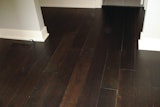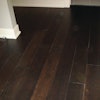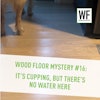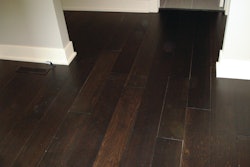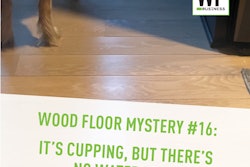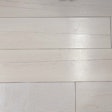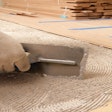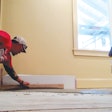
The Problem
I was called to inspect a wood floor in a major northeastern metropolitan area. As the inspection progressed, the home owner said, "I called my general contractor about these cracks in my floor. He told me that the flooring contractor was sold some green wood, which is what caused the cracks." Then it was my task to definitively determine whether or not the spaces between the boards were caused by shrinkage due to the use of lumber that was not properly kiln dried during manufacture.
The Procedure
This is actually one of the most simple determinations (compared with proving that there was excessive moisture from an unknown source). By eliminating improper kiln drying, we can then focus on the real source(s) of the problems.
To appreciate the accuracy of this method, you have to understand the underlying principles of the wood-moisture relationship. They are:
1) Wood shrinks and swells based on the relative humidity to which it is exposed.
2) Moisture content (MC) is directly related to relative humidity (RH). For example, 30% RH = 6.2% MC, 50% RH = 9.2% MC, 70% RH = 13.1 % MC, 90% RH = 20.5% MC.
3) There is a direct and incremental (linear) relationship between changes in MC and changes in RH.
Of course this information isn't new; there is extensive information concerning the wood moisture relationship in many publications, the most detailed of which is the Wood Handbook Agricultural Handbook 72. There is a formula for computing the change in dimension (deltaD):

By doing a little algebra we can develop a newformula which computes a value for MCinitial:

The next step was to collect the known and measurable information during the inspection, which was used to compute MCinitial. St is a shrinkage tangential and can be found in tables in technical literature. Dinitial is the manufactured width of the flooring. MCfinal and deltaD are measured at the time of the inspection and must be matched to individual boards when measurements are made.
The floor being inspected was a ¾- by 2¼-inch hard maple floor. Therefore, St = 0.099 (9.9 percent), and the Dinitial = 2.25 (inches).
I had measured a number of boards for width and MC, then plugged the numbers into the formula one board at a time to calculate their MCinitial. The calculated MCinitial is then compared with the 6 to 9 percent standard. Some of the pieces measured were 11 percent MC and measured 0.03125 inch greater than the manufactured width of 2.25 inches.
The computations then looked like this:

This falls within the 6 to 9 percent standard, which means that this piece of flooring was made from properly kiln-dried lumber.
This is also a great tool for predicting swelling and shrinking based on anticipated changes in RH. Of course, the description is greatly abbreviated to fit into this magazine. You can find more complete descriptions in the Wood Handbook or Understanding Wood by R. Bruce Hoadley (Taunton Press).
The Causes
The causes for excessive moisture are legion. But in this instance we know that the cause for these spaces is not improper kiln drying. The real work begins to establish a chronology of events and the details associated with the floor.
How to Fix the Floor
If there is looseness in conjunction with the spaces,this is a difficult repair because of the need to conceal the fasteners in a properly installed floor.
In the Future
Buy yourself a moisture meter. Cupping, crowning,and significant spaces between boards are nearly always related to excessive moisture.











